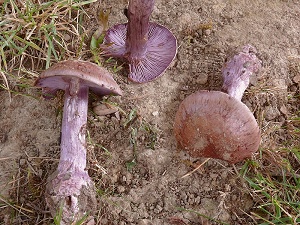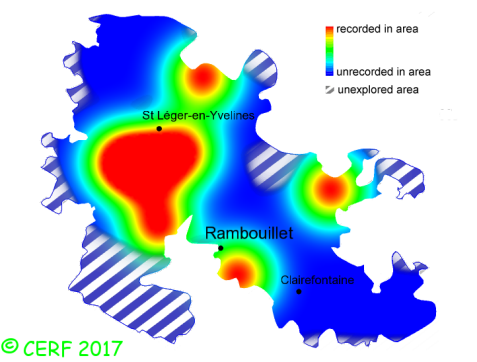| Cortinarius purpurascens (Velen.) Hry |
|
|
|
|
|
|
The cap is violaceous brown, red-brown. The cap surface is smooth, viscid or sticky. The stem is violaceous, bulbous. The flesh is violaceous, turning red or slightly purple when exposed to air; its taste is mild; the odour is faint but pleasant, fruity or of cocoa powder; its texture is fibrous. The gills are purple then rusty red, adnate, crowded . The spore print is rusty brown. This species is mycorrhizal. It grows on the ground, in broad-leaved and coniferous woods, on a rather acid, but also calcareous soil, with spruce, beech. The fruiting period takes place from July to November.
Chemical tests : flesh becoming bright violet when in contact with TL4. Distinctive features : cap surface brown, but flesh and stem violet coloured; violet gills, turning rusty; flesh turning red when exposed to air; marginate bulbous stem base; honey to sickly odour Cortinarius purpurascens is quite rare and localised in the forest of Rambouillet, and is occasional, more generally speaking . | ||
|
page updated on 14/01/18

